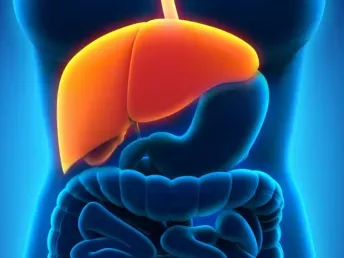What is Double Balloon Enteroscopy?
Double Balloon Enteroscopy (DBE) is a diagnostic and therapeutic endoscopic procedure used to examine the small intestine, which is otherwise difficult to access with conventional endoscopy or imaging techniques. The procedure involves the use of a long and flexible endoscope with two balloons attached to it - one at the tip of the endoscope and another at its base. Depending on the area of the small intestine to be examined, DBE is performed through either the mouth or the anus.
The DBE procedure involves inflating one of the balloons to anchor the endoscope in place and then advancing the endoscope until the intestine is taut. The second balloon is then inflated to anchor the endoscope in place and advance it further into the small intestine. The procedure allows for the visualization of the small intestine and the performance of various diagnostic and therapeutic procedures such as biopsy, removal of small tumors, and control of bleeding.
Why and when is Double Balloon Enteroscopy recommended?
Double Balloon Enteroscopy (DBE) is recommended when there is a suspected abnormality or disease in the small intestine that cannot be diagnosed by other imaging techniques or conventional endoscopy. It may also be used for therapeutic purposes such as removing small tumors or treating bleeding in the small intestine.
Some common reasons why DBE may be recommended include:
- Obscure gastrointestinal bleeding: DBE may be used to identify and treat the source of bleeding in the small intestine that cannot be diagnosed with other imaging techniques.
- Suspected tumors or polyps: DBE may be recommended if a tumor or polyp is suspected in the small intestine, which cannot be visualized with other imaging techniques.
- Inflammatory bowel disease: DBE can be used to diagnose and monitor inflammatory bowel diseases such as Crohn's disease, which can affect any part of the gastrointestinal tract, including the small intestine.
- Suspected malabsorption syndromes: DBE may be recommended to evaluate the small intestine for malabsorption syndromes such as celiac disease.
DBE may also be recommended in certain cases where other imaging techniques such as CT scan, MRI, or capsule endoscopy have failed to provide a diagnosis. The timing of the procedure depends on the individual case and the specific reason for the procedure. Your doctor will determine when DBE is appropriate and when to schedule the procedure.
How is Double Balloon Enteroscopy different from other conventional treatments?
Double Balloon Enteroscopy (DBE) is different from other conventional treatments in several ways:
Targeted examination of the small intestine: DBE allows for a targeted examination of the small intestine, which is otherwise difficult to access with other conventional endoscopic procedures. Other conventional treatments such as colonoscopy or upper endoscopy only examine the colon or the upper gastrointestinal tract, respectively.
Therapeutic capabilities: DBE allows for the performance of various therapeutic procedures in the small intestine such as biopsy, removal of small tumors, and control of bleeding.
Real-time visualization: DBE provides real-time visualization of the small intestine, which allows for better detection and characterization of lesions or abnormalities that may be missed with other imaging techniques.
High diagnostic yield: DBE has been shown to have a high diagnostic yield for small bowel diseases compared to other imaging techniques such as CT scan, MRI, or capsule endoscopy.
Minimally invasive: DBE is a minimally invasive procedure that does not require and has a low risk of complications.
Overall, DBE offers a safe and effective method for diagnosing and treating small bowel diseases that are not accessible with other conventional endoscopic procedures or imaging techniques.
How is life after Double Balloon Enteroscopy?
Life after Double Balloon Enteroscopy (DBE) generally depends on the specific reason for the procedure, the findings of the procedure, and any therapeutic interventions that were performed during the procedure. In general, DBE is a safe and minimally invasive procedure that does not require a significant recovery period.
After the procedure, you may experience some mild discomfort or bloating due to the air that was introduced into your small intestine during the procedure. This should subside within a few hours after the procedure. You may also be advised to avoid eating or drinking for a few hours after the procedure, depending on the extent of the examination or therapeutic interventions.
If biopsies were taken during the procedure, you may experience some mild bleeding, which is normal and should subside within a few days. If a therapeutic intervention such as tumor removal or control of bleeding was performed during the procedure, your doctor will provide specific instructions on how to care for the area and monitor for any signs of complications.
If you experience any severe pain, bleeding, or other concerning symptoms after DBE, you should contact your doctor immediately.
Blogs
The source of trustworthy health and medical information. Through this section, we provide research-based health information, and all that is happening in Aster Hospital.











